Family Trees and Documents
What I’m presenting here is not so much a family tree as a cast of characters, an introduction to the people I’ll be discussing on this blog. Perhaps I’ll add some conventional family trees later, along with some source documents.
A word about my father, Paul Jarolim. Like my mother, he was from Vienna and fled Nazi-occupied Austria. But my parents met in Brighton Beach, Brooklyn, in an English class for refugees. As far as I know, my father had no connection to Sigmund Freud or to his butcher.
Here, the focus is solely on the maternal side of my mother’s family, the Kornmehls — specifically, the Kornmehls of Vienna. I have discovered that there are Kornmehls everywhere. One of my newly found relatives, Leonard Schneider, wrote an award-winning genealogical study, dating the Kornmehl family back to 18th-century Tarnow, Poland. The family history and family tree he created are being updated with the new information gathered since this blog was started.
These notations are a work in progress; they’ll change as I continue to learn more about the various family members.
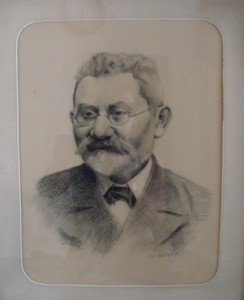
Chaim Heinrich Kornmehl (born 1842 in Tarnow, Poland, died 1913 in Vienna) and Chaya Henriette (Scheindle) Kornmehl (born 1844 in Tarnow, Poland, died 1908 in Vienna) are the parents of the eight brothers and sisters pictured at the top of this page; I don’t yet know in what year the photograph was taken, or for what occasion (see Seeking Dating & Fashion Advice). The tombstone of Henriette (Chaya) Kornmehl calls her a Fleischhauersgattin—a butcher’s wife. (It was too late for her to protest, but I can’t help but wonder if she wouldn’t have preferred to be remembered for something else.) So it was clear that Chaim — and perhaps his forebears — was the first traceable family member to be in the meat business.
Look for additional family photographs in the Photo Album.
From left to right:
Hermann and Ernestine (Kornmehl) Rosenbaum — my grandparents
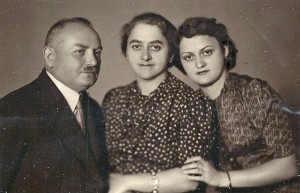
Ernestine Kornmehl Rosenbaum was born 1885 in Vienna. She was deported to a death camp from Riga in 1942.
Hermann Rosenbaum was born in 1876 in Pilzno, Poland. He was deported to a death camp from Riga in 1942. As far as I know, he was a traveling stationery salesman.
They had only one child, Henriette (Rita) Rosenbaum Jarolim (born 1913), my mother, who came to America in 1939 and married Paul Jarolim in 1941. She died in Atlanta in 1991.
Oddly, I know less about my grandparents than I know about two of my great uncles: Siegmund Kornmehl, Freud’s butcher (he had the luck to be connected to a famous person), and Rudolf Kornmehl (he had the luck to have a granddaughter who wrote a book about the family; see below). I hope to change that.
David and Mizzi (Kornmehl) Schmerling
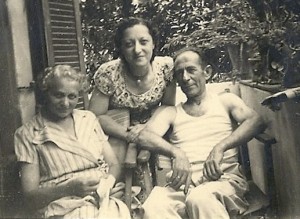
Mizzi Kornmehl Schmerling was born in 1883 in Vienna and died in the city in July 1972. David Schmerling was born in 1885 in Poland and died in Vienna in 1956. He married Mizzi in 1909. David Schmerling took the surname of his mother; his father was also a Kornmehl, and he and Mizzi were first cousins.
David Schmerling was a jeweler.
They had three daughters: Stella (b. 1910), who is pictured with her mother and husband here; Hermine and Edith (known as Herma/Mimi and Ditti); they were twins, born 1918. Stella and Mizzi made their way back to Vienna after this picture was taken; I don’t know in what year. Herma and Edith moved to London.
I have since discovered that I (briefly) met other members of the Kornmehl family when I was young, but the Schmerlings were the only ones I recall meeting, and as an adult: Mizzi and Stella when I visited Vienna in 1970, and Herma and Edith, who were in London the year I lived there, 1988–89.
Leopold and Reisel (Kornmehl) Farber
Leopold (Leib) Farber, born 1876 in Winiary, near Poznan, Poland, married Reisel (Resi) Kornmehl, born 1877 in Radlow, Poland, in Vienna in 1903.
They had two children, Hermoine (Herma) Farber, born 1905, and Ernst, born 1903.
Herma married Ludvik Alt, born in Czechoslovakia in 1894.
Leib fit right into the family: He was a butcher, like his father-in-law and three of his brothers-in-law. And he also went into business with another brother in law, Siegmund Kornmehl (OSK): In 1912, they applied for and got a license to open a coffee shop on Ausstellungstrasse #27.
Siegmund died in 1938, and Leib left Vienna the next year, so the business must have been taken over by the Nazis. It was closed in 1941.
Leib and Resi fled from Vienna to France in late 1939. They lived in Paris until early 1940, when they received permission to move to Brazil. They arrived there in March 9, 1940, on the ship “Formosa.”
There to meet them were their daughter Herma and son-in-law Ludvik Alt, who was born in Czechoslovakia in 1893. The couple must have paved the way for them to get to Brazil, or at least inspired them. They all lived in Rio de Janeiro, where Ludvik and Herma were part owners in a company called Decal Lumax, Ltd. which manufactured labels. Leib, who listed himself on his entry application as a butcher, practiced his trade there.
It turns out his son did too.
Ernst found his way to the Dominican Republic, in Ciudad Trujillo, where he was in the family business – the administrator of a matadero, a slaughterhouse.
Ernst married Maria de la Concepcion Menendez—perhaps the most exotic member of the family–who was born in Spain in 1912; she came to DR to flee the Spanish Civil War. The couple ended up having to flee Trujillo too, asking for a visa to “visit Ernest’s dying mother” in Brazil in 1956. Instead, they went to Mexico for a bit and then to Spain (1964), where Ernest died in 1976. The couple did not have any children. Neither did Ludvik and Herma Alt.
By the time Ernest requested a visa to Brazil in 1956, his father was listed as deceased. Reports of Resi’s imminent demise were greatly exaggerated. She didn’t die until 1968.
For more details on the Farber family story, see A Tale of Three Dictators.
Siegmund Kornmehl and Anna Kornmehl
Anna Kornmehl was born in 1875 in Radlow or Tarnow, Poland. She was deported from Vienna to Theresienstadt in 1942 and died there in 1943. Her maiden name and her married name were the same in the death certificate, which confirms that the man she married was also a Kornmehl.
Yes, Anna married a man with the same name as her brother, Siegmund. We know about the Oedipus complex and the Electra complex but I don’t think Freud had a term for unconscious brother-sister hankerings. I propose the Zeus complex when applied to a woman, the Hera complex when applied to a man, since Zeus and Hera were brother and sister as well as husband and wife.
But I digress.
 This Siegmund Kornmehl, born in 1875 in Tarnow, Poland, was a cousin, the son of Aron Kornmehl — my great-grandfather’s brother — and Rivka Kornmehl (born Spiegel). He is listed in the Vienna address book as a”cafetier,” and owned — or co-owned — the Cafe Victoria, pictured in this postcard from 1929.
This Siegmund Kornmehl, born in 1875 in Tarnow, Poland, was a cousin, the son of Aron Kornmehl — my great-grandfather’s brother — and Rivka Kornmehl (born Spiegel). He is listed in the Vienna address book as a”cafetier,” and owned — or co-owned — the Cafe Victoria, pictured in this postcard from 1929.
I wonder: What was it like at family gatherings with the two Siegmunds? Was one called Sigi or perhaps A.S. for Anna’s Siegmund? This Siegmund looks like one of the Smith Brothers, of cough drop fame. In a multiply mustachio-ed family, he is the only one with full facial hair. Perhaps he was called The Bearded One, or something along those lines.
Anna and Siegmund had four children: Alfons Kornmehl (b. 1899) and Margit (Greta) Kornmehl (b. 1913) were sent with Anna to Theresienstadt; Margit and Alfons are listed in separate documents as having died in Auschwitz. A third son, Egon Kornmehl (b. 1901), lived in England from 1939 and then moved to New York, where he tried unsuccessfully to secure passage for his mother and siblings. He married Gitta/Gisella Szabo, who was born in Yugoslavia, and they were naturalized in 1945. Henriette (Hetty) Kornmehl, born 1908, married Otto Sternberg in Vienna in 1930. I met them years later in New York, where they lived on the Upper West Side — just down West End Avenue from my friend Martha.
Adolf and Bertha (Kornmehl) Schweizer
I know less about these two than I do about any of the others. Bertha Kornmehl was born in 1873 in Tarnow. Adolf Schweizer was born in 1875; I don’t know where. They adopted a daughter, Erika, at some point; I haven’t yet traced her. Both Adolf and Bertha were sent to concentration camps.
So far, I have only an inkling about the professions of the men the five Kornmehl sister married: My grandfather was in the stationery business, David Schmerling made gold jewelry, the “other” Siegmund Kornmehl was a cafetier; the profession of Adolf Schweizer so far eludes me, but I don’t believe either of them were involved with meat. The three Kornmehl brothers, Siegmund, Rudolf and Martin —not to mention their father, Chaim, and Martin’s son, George—had the family monopoly on the butcher business, and possibly even the Vienna monopoly.
Siegmund Kornmehl and Helen(e) Goldner Kornmehl—Freud’s butcher
Siegmund — real name Moises Schulim according to his marriage certificate — was the oldest of the Kornmehl siblings, born in September 16, 1868 in Tarnow, Poland. He died in Palestine in either 1940 or 1942 (more on which in a minute).
In 1894, he and Helene Goldner — 1873 or 1874 in Raab (German name for Györ) — were married in Vienna.
According to information from the Sigmund Freud Museum exhibition, “Freud’s Lost Neighbors” (I’m attaching a pdf of the portion of the catalog that discusses Siegmund Kornmehl, “The Politics of Reparation: Freud’s Lost Neighbors“):
Siegmund Kornmehl died in 1942 in Tel Aviv, and from 1945 on his wife Helene petitioned from Palestine for the return of her seized assets. In 1946, the “buyer” reported the house on Währinger Street as a seized asset, and two years later Helene Kornmehl reclaimed the property. However, under the Third Restoration Law, she had to repay the same sale price from 1939 almost down to the shilling, on the grounds that she and her husband had had full access to and free reign with the entire earlier proceeds.
Helene’s struggle with the Austrian government to reclaim her property is used as an example in the catalog of the extreme unfairness of Austria’s reparation policy after the war.
After Siegmund died, Helene seems to have adopted her niece, Stella (one of the three daughters of David and Mizzi Kornmehl Schmerling) — no doubt for reparation purposes. Which is intriguing, since Stella’s parents were still alive…
Martin Kornmehl and Flora Neumann Kornmehl
Martin, born in 1875, was a butcher. He died in Vienna in 1935. His wife, Flora Neumann, born in 1874 (I don’t yet know where), died in Auschwitz in 1944.
They had four children.
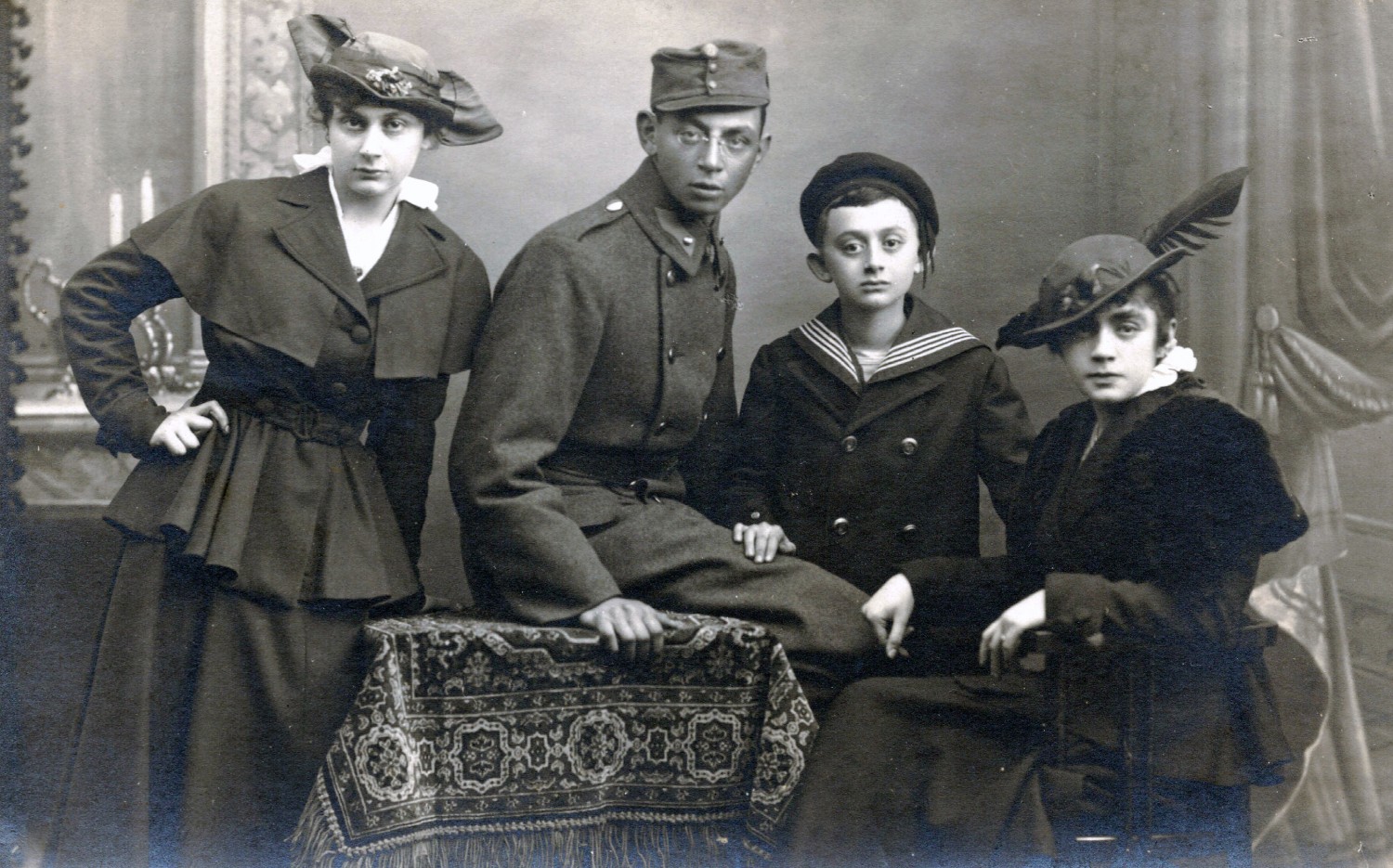
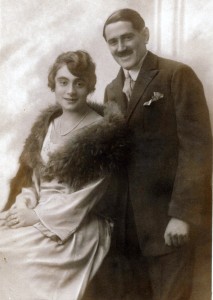
Lilly Kornmehl, known as Alice, was born in Vienna March 2, 1896 and married Gustav Israel Bratspies, who was born November 23, 1895, also in Vienna. Their son, Herbert Heinz Israel Bratspies, was born in Vienna on May 16, 1923. The family emigrated to Singapore and then to Australia, where they were interred at Tatura camp, in rural Victoria. They moved to Melbourne after the war.
On August 26, 1949, Herbert Bratspies married Joyce Seaford (born February 11, 1923; the family name was originally Schubert) in Melbourne. They had two children, Graham and Sylvia, who live in Melbourne. Herbert died in 2009; Joyce is still alive.
George Kornmehl, born in 1897 [?] in Vienna, was also a butcher. He left for Palestine on March 14, 1939 via Marseille and arrived in Tel Aviv where he was arrested and held in the Sarafand Detention Camp on August 22, 1939. (Sarafand was created by the British to detain thousands of European Jewish refugees coming via ship into Palestine.) Note: George is listed on the family tree that Herbert Bratspies created as having been born in 1894 and dying in 1985; there is no evidence that he remarried.
George married Clara (Annie Fischer), who was born 1907 in Budapest. She died in 1944 in Auschwitz. They had one son, Peter (Martin), born in 1937, who also died in Auschwitz.
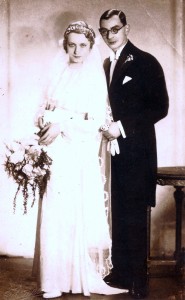
Emmy (Emma) Kornmehl was born in 1899 in Vienna. In 1923, she married Franz Joseph (Ferry) Fellner (born 1897) in Vienna. They later separated and she never had any children. She joined her sister Lilly in Melbourne in 1949, and died there in 1991.
Hans Kornmehl was born in 1903 in Vienna and followed in his father and brother’s footsteps: He was a butcher. He married Valerie Johanna (Wally) Oberndorfer, who was born Roman Catholic on March 21, 1904 in Vienna. She converted to Judaism in 1929 and got married in the Jewish faith to Hans in 1932. She left the Jewish faith on April 14, 1938. A son Bruno is noted on the Bratspies family tree as having been born in 1925, four years before Hans and Valerie had a Jewish wedding; it is unknown whether he was Valerie’s by a previous marriage, or whether he was the product of an earlier civil marriage between Valerie and Hans. Hans is on the record as entering Buchenwald in February 1945, but there is no record of him after that. There is currently no information on what happened to Bruno.
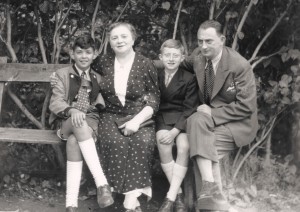
Rudolf Kornmehl and Molly Tauber Kornmehl
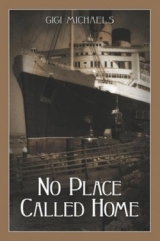 Rudolph, the third butcher in the family, was born in 1880 and died in New York City in 1969. Molly was born in 1881 in Vienna and died in New York around 1958 (her naturalization document was signed December 1957). Rudolph and Molly had two daughters, Paula Pollak (b. 1909 in Vienna, died 1994 in Florida) and Margaret Hess (b. 1905, died 1956 or 7 in New York). Margaret’s daughter, Gigi Michaels, wrote a book about the entire family’s exodus from Vienna to Shanghai in September 1938 and, eventually, to the United States: No Place Called Home
Rudolph, the third butcher in the family, was born in 1880 and died in New York City in 1969. Molly was born in 1881 in Vienna and died in New York around 1958 (her naturalization document was signed December 1957). Rudolph and Molly had two daughters, Paula Pollak (b. 1909 in Vienna, died 1994 in Florida) and Margaret Hess (b. 1905, died 1956 or 7 in New York). Margaret’s daughter, Gigi Michaels, wrote a book about the entire family’s exodus from Vienna to Shanghai in September 1938 and, eventually, to the United States: No Place Called Home.
***
As a result of the publication of No Place Called Home in early 2012, only a few months after I had begun researching my mother’s family, I suddenly got a great deal of information about the lives of at least one of the Kornmehl siblings and their family in Vienna. I’m still processing it. I’m not surprised to discover that they lived quite well; the picture that had been hanging in my hallway for 20 years, the one that you see at the top of this page, shows a group of prosperous-looking people. But it’s difficult to reconcile the level of comfort described in the book with my childhood in Brooklyn. My sister and I grew up lower middle class (possibly poor, based solely on income), four of us in a one-bedroom apartment until I was 12. Both parents worked, my mother as a fur finisher and seamstress, my father as a dental technician — not to be confused with a dentist.
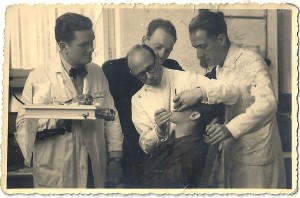
My father made dentures and bridges, which you might think would have paid well but, apparently, didn’t. I used to get my teeth fixed in trade from various dentists my father worked for and always felt like the charity child of the help. Now I’m feeling so bad for my father that I included a picture of him, in spite of proclaiming this blog solely is devoted to my mother’s family.
Back to No Place Called Home. Also striking is the fact that my mother’s uncle Rudolf and one of my mother’s first cousins lived in Queens while we lived in Brooklyn and I don’t recall ever meeting them, although I now think I heard their names. Was there bad blood between the families? I imagine it would it would be difficult when one family escapes, intact, hardships notwithstanding, and the other doesn’t. The wealth disparity, maybe even an education disparity, might have been a problem too.
Or maybe they weren’t especially close in Vienna.
This is one of the many things I hope to determine.

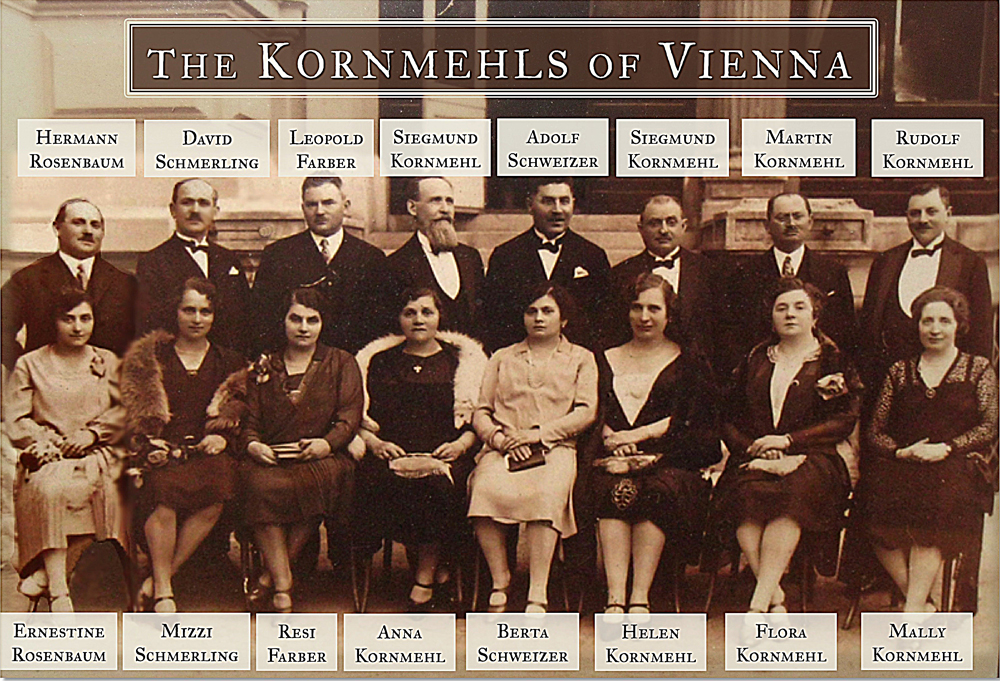
I’d like to hear more about how your mother came to the U.S. in 1939, and why her parents stayed behind, if you know.
Also, any relation between your Schweitzers and Albert?
I do know, in rough outline. The Nazis confiscated property and money from the Jews in the form of an exit tax, so my grandparents were left with only enough money to send my mother over. Jews also had to be “sponsored” — someone had to vouch for them as not being a financial liability to the U.S. — in order to get into America. My mother worked very hard to try to earn enough money to get her parents over but by the time she managed it, the borders had been closed.
I don’t think there is any relation because I imagine my mother would have mentioned it and Albert wasn’t Jewish but I know very little about the Schweitzers at this point. I have pondered that possible connection too.
Countries like Holland didn’t do much better than Austria concerning reparation policy. Trying to hide between the “fact” they couldn’t be held accountable for what the Germans did in Holland. Furthermore, victims of the war the Dutch waged in Indonesia right after the 2nd world war, had the same rights as the jews. Double Dutch.
Fantastic how much you already have found out about your family. It must have been a great feeling putting a name and a story on every face from that picture.
Sigh. If there were awards for the worst way people all over the world treated each other, the competition would be really stiff!
The names on the pictures were the easy part; my mother identified those. The stories are a much larger work in progress. But you’re right, it is a great feeling whenever I succeed in teasing out another detail of their lives.
Silly question:
You mention the surname “Speigel” and I was wondering if they were the family of food distributors that had a place in Turken Platz in Vienna
Not silly at all — I’m continually amazed at the connections that turn up. But I’m afraid I don’t know. It would be interesting to find out because of the many food businesses the Kornmehl family was in.
The Toombstone of Chaya (Henriette) Kornmehl … memorial reads…
This is the memorial stone of a wife of Lapidot of good intelligence,
Her actions were good,
A mother for the poor,
A sister for the destitute,
A crown to her husband and children,
She’s the modest woman, the glorious lady,
Mrs Chaya Kornmehl, of blessed memory,
Daughter of Reuven Shaidlinger, of blessed memory,
Died and was gathered unto her people on the 4 Shevat 5665.
Her deeds won’t be forgotten, her memory won’t cease and may her soul be bound in the bond of life.
Footnote
The wife of Lapidot is a biblical character of great intelligence and ingeniosity who helped her husband acquire wisdom despite his very simple background.
It must have been created by Chaim (Heinrich) Kornmehl, who died five years later. M.
Thanks, Miriam. Her father’s name is usually spelled Scheidlinger and she also had a gravestone in Tarnow, where the family lived before coming to Vienna. There she is only described as a butcher’s wife/female butcher.
Hello
I found this chapter about several Kornmehl familie-stories on the internet:
https://vilnaconnect.files.wordpress.com/2013/10/chap-14-book-family-stories-kornmehl-new-13.pdf
Do you have any idea who the author of that book is?
I´m searching for information about a family that is mentioned in the book as the “Wisnitz Kornmehls”.
Hi, the book you’re referring to is The Tarnow Connection, which is only available in a very limited edition. Leonard Schneider was the one who put it together originally, but there several other contributed to it for a second (also limited) edition. However, there is only one other mention of the Wisnitz Kornmehls in the book and that is on the family tree. I would be happy to scan and email that to you.